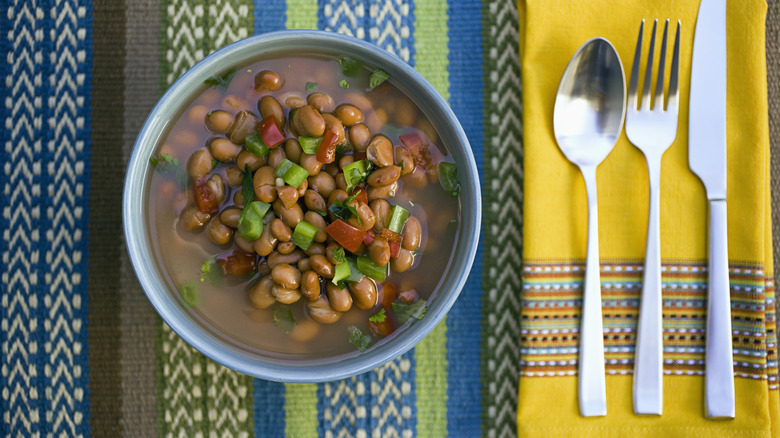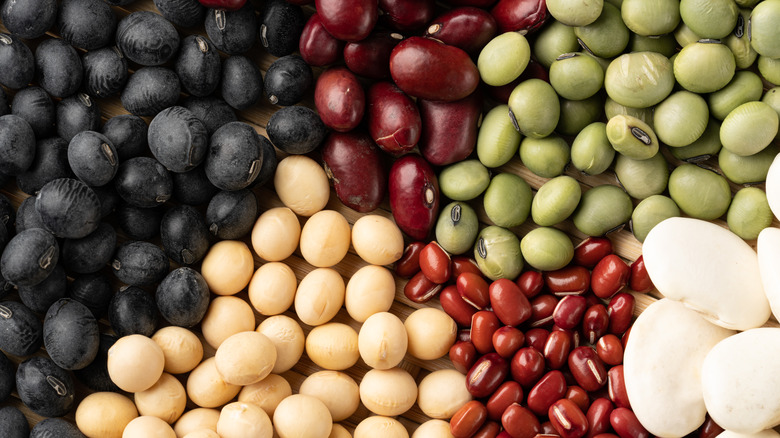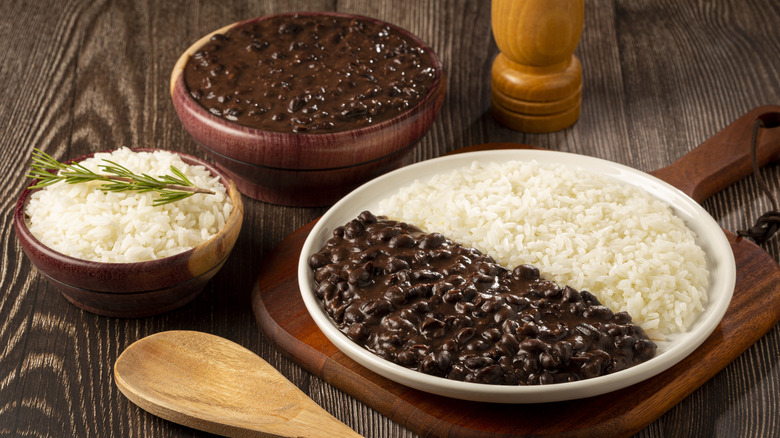Can Dried Beans Be Used In Place Of Canned Beans?
Modern convenience is a wonderful thing, and canned food is an excellent example of why. Sure, canning has been around for centuries, as many people's savvy grandmothers can attest. But once upon a time, people had to can all manner of protein and produce themselves. Producing just one can of goods is a laborious process — making more is far harder. Nowadays, in tremendous contrast, shoppers can waltz into virtually any grocery store in their vicinity and stock up on canned goods by the dozens.
One of the most versatile, cost-effective, and straight-up delicious things to buy in a can are beans. Beans are humble, but therein lies their appeal: They're cheap and easy to get a hold of, hard to mess up all that badly, and, even in their more simple form, absolutely delectable. With the advent of commercial canning, they became an even more accessible staple of the modern diet. But some people prefer to cook with dried beans, for a wide variety of reasons. When they encounter a recipe that uses canned beans, can they substitute their preferred legumes? They can — and it's a relatively simple process to boot.
Why cook dried beans?
Canned beans are the kind of food you always want to have on hand. They're quick, convenient, impressively affordable, easy to stack up in a pantry, and have an excellent shelf life. No wonder so many people choose them as their default beans — that's basically everything someone could want in a staple food. Dried beans, in contrast, are fussy. Sure, they're still cheap, widely available, and easy to buy in bulk, but they're significantly more complicated to prepare. Specifically, they take a long time to cook, too. Dried beans often require (or at least benefit from) soaking periods that can last for hours. Canned beans are simply dried beans that have already been cooked. The fact that they cut out that laborious step in the process is an obvious point in their favor.
So why do some people still prefer dried beans, to the point of wanting to know how to substitute them for canned? Because they're absolutely delicious. Cooking dried beans might be time-consuming, per HuffPost, but it also allows you to infuse them with unbeatable flavor. Plus, dried beans come in a dazzling array of varieties, including many heirlooms you've likely never heard of, and they are cheaper than the canned variety. If you've always used canned beans, you're certainly saving time, but you might be sacrificing taste.
Swapping canned beans with dried
Once you've learned to cook dried beans, you may find it hard to go back to using the canned variety. So what do you do when you're confronted with a recipe that uses canned beans? You might assume a conversion can't be made, but the clever cooks over at Serious Eats have discovered an easy way to substitute dried legumes for canned ones. Writer Daniel Gritzer carefully measured the volumes and weights of dried cannellini beans, red kidney beans, pinto beans, black beans, chickpeas, and black-eyed peas, before and after the cooking process. Most of these luscious legumes had roughly doubled in weight and volume after emerging from the cooking pot.
Notably, black-eyed peas and chickpeas were minor exceptions to this rule. A pound of the former became 2 pounds, 13 ounces once cooked; the latter tripled in weight, and, in terms of volume, went from 3 cups dried to 7 cups cooked.
With these deviations in mind, we arrive at a fairly simple and trustworthy rule of thumb: You can substitute canned beans with dried ones by using half of what the recipe calls for. When you've got a bit more time on your hands and a hankering for beans at their absolute best, this easy formula is sure to serve you well.


